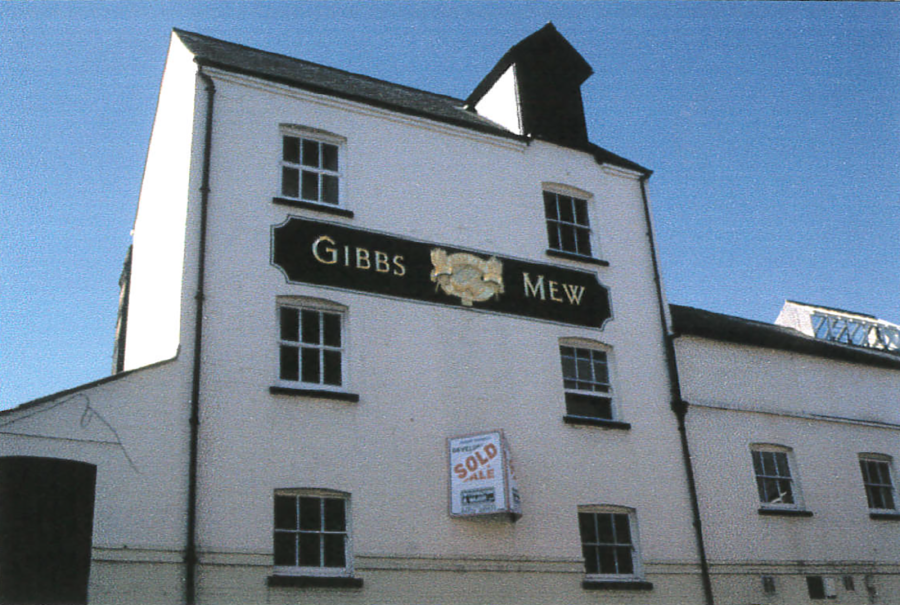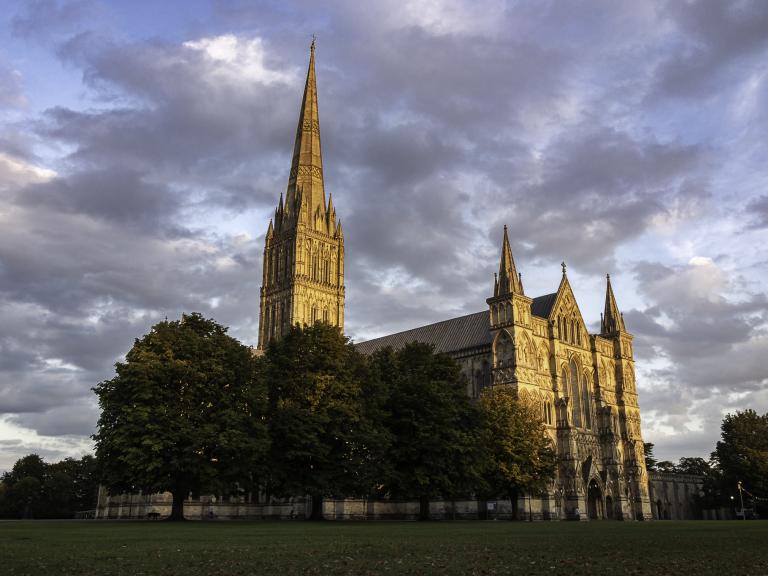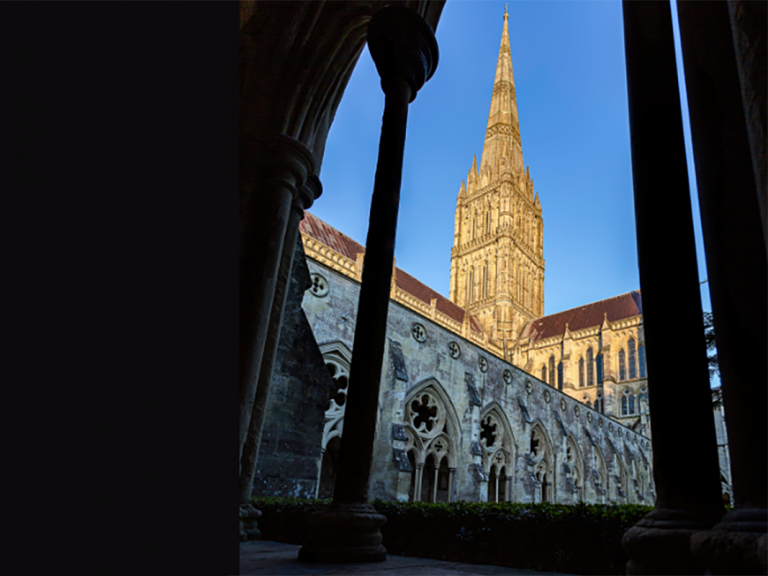Last week we focussed on a site in the 'back-lands’ of Trinity Chequer and saw how the findings helped fashion our ideas about land use and the appearance of the city behind the street frontages. We now move to those street frontages themselves.
The excavations at the former Anchor Brewery on Gigant Street took place in 2000 and examined six conjoining medieval properties, making it the most extensive excavation of a Salisbury street frontage. This made it possible to study individual tenements and their occupants in a way that could not have been done before.
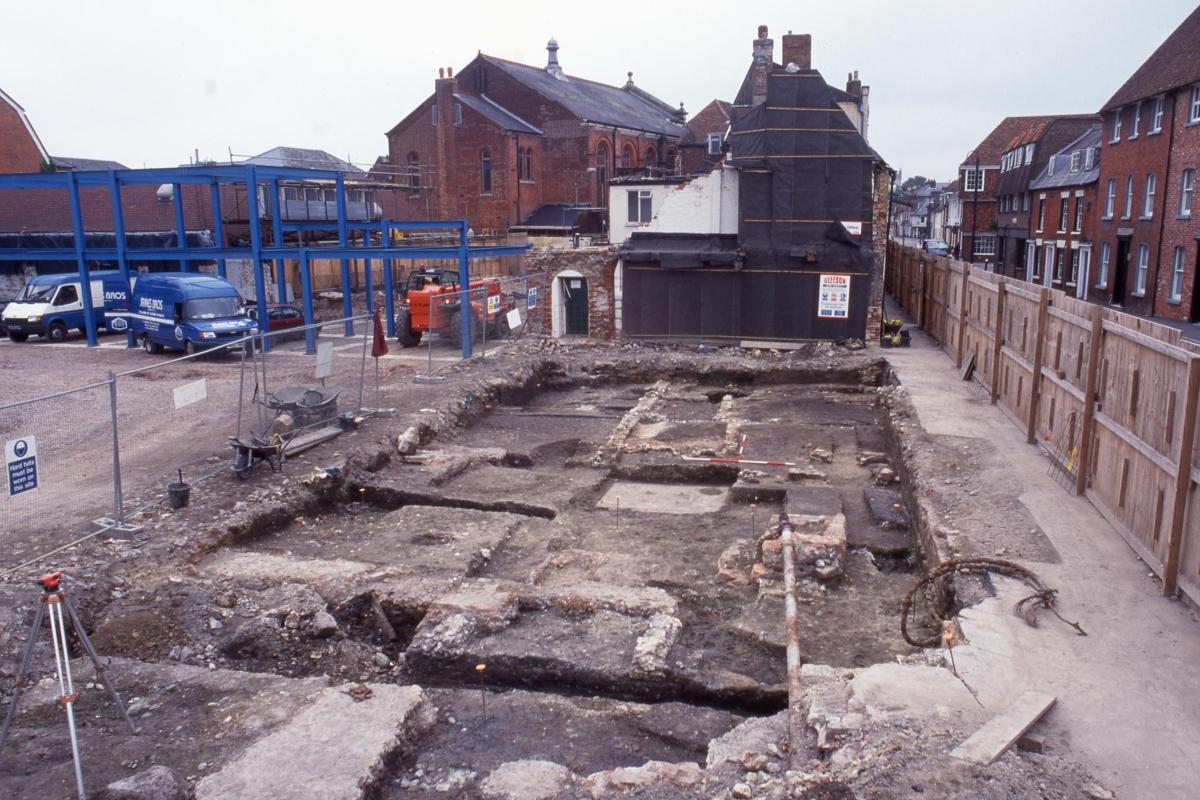
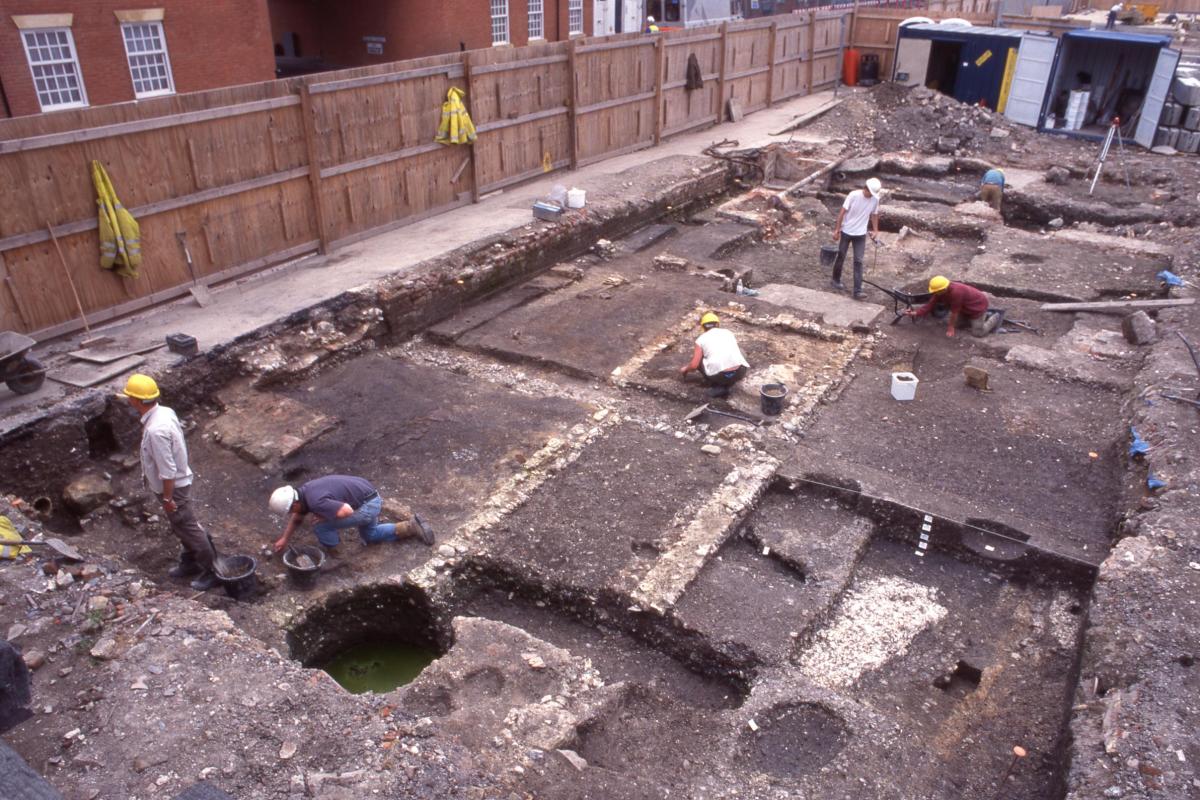
Left: the excavations, with Gigant Street on the right, and Elim Chapel in the centre background. Right: plan view of the excavations, with foundations of buildings 1 and 2 visible in the foreground
Sadly, there were no opportunities to extend the trench and link it with the respective ‘back-lands’. Understanding of the area was also improved by additional investigations, immediately to the north, at the junction of Milford Street and Gigant Street, by CKC Archaeology. This work illustrates that although most of the archaeological work we have described in this series has been undertaken by Wessex Archaeology, other organisations have also contributed to the story of Salisbury. The excavators uncovered part of a high-status 14th century complex that was constructed around a courtyard and highlighted the diversity of buildings and status of occupants within a relatively short distance.
The Anchor Brewery site contained five phases of medieval and later activity, which were similar to others in Salisbury. Layers of material were first dumped in to consolidate the ground. Buildings appeared on the site in the mid 13th century. These were poorly defined structures and may have had timber foundations, which leave few traces. The buildings were remodelled in the 14th century when six, single-story, timber framed cellular structures, each measuring approximately 5 x 5 m, with flint foundations were erected. Each room was supplied with a central hearth and a through passage allowing access to the ‘back-lands’, suggesting that they were all separate units.
These buildings occupied unchanging footprints but were redesigned in the late 14th or early 15th century by the insertion of an internal partition at the back to create possible sleeping space. More significant alterations occurred in the mid 15th century when hearths were moved to the front of the room, possibly coincidental with the construction of chimneys and the installation of upper floors.
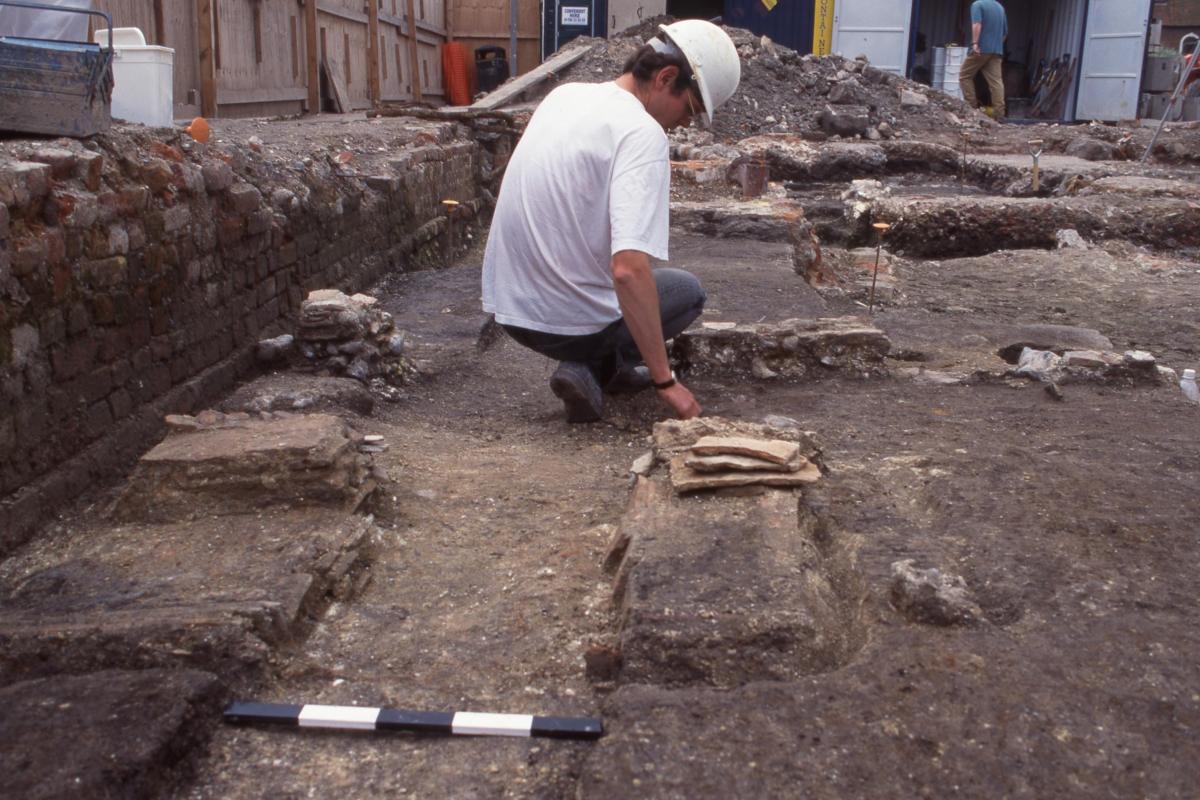
Mid 15th century hearth of building 2, with excavator in the through passage
The published report also included detailed environmental analysis, which was conducted on floor sweepings from around the hearths. These foci of the household contained traces of carbonised food remains and other indicators of domestic life. Many of these residues were identical to those from the cess pits; however, hearths represent the source of the food-chain from which so much of the excreted evidence was derived. Charred floor sweepings included wheat, barley and oats, which were used not only for food, including bread, but also for brewing. The material also included carbonised heather, gorse and oak which were used as firewood. Heather served a variety of other functions including bedding, brooms, thatch and ropes, but burns quickly giving a rapid high temperature heat when alight. These particular plants do not grow well on chalky soils but thrive on acidic soils to the south-east of the city showing how people used resources from a variety of environments.
The residents were provided by locally produced cooking pots. Food comprised domestic red meat, supplemented by chicken and marine fish, which was brought from the coast. We saw in New Street that traces of hammer-scale, produced by working metal, hinted that those residents may have been artisans who worked from home. The occupants of Gigant Street, in contrast, produced no comparable, diagnostic by-products to indicate their occupations.
The final report of the excavation concluded that the buildings represented the homes of less affluent occupants, people who lived cheek by jowl with neighbouring wealthy residents. The excavation was sufficiently detailed to provide a convenient template to compare other excavations elsewhere in the chequer and in the city.
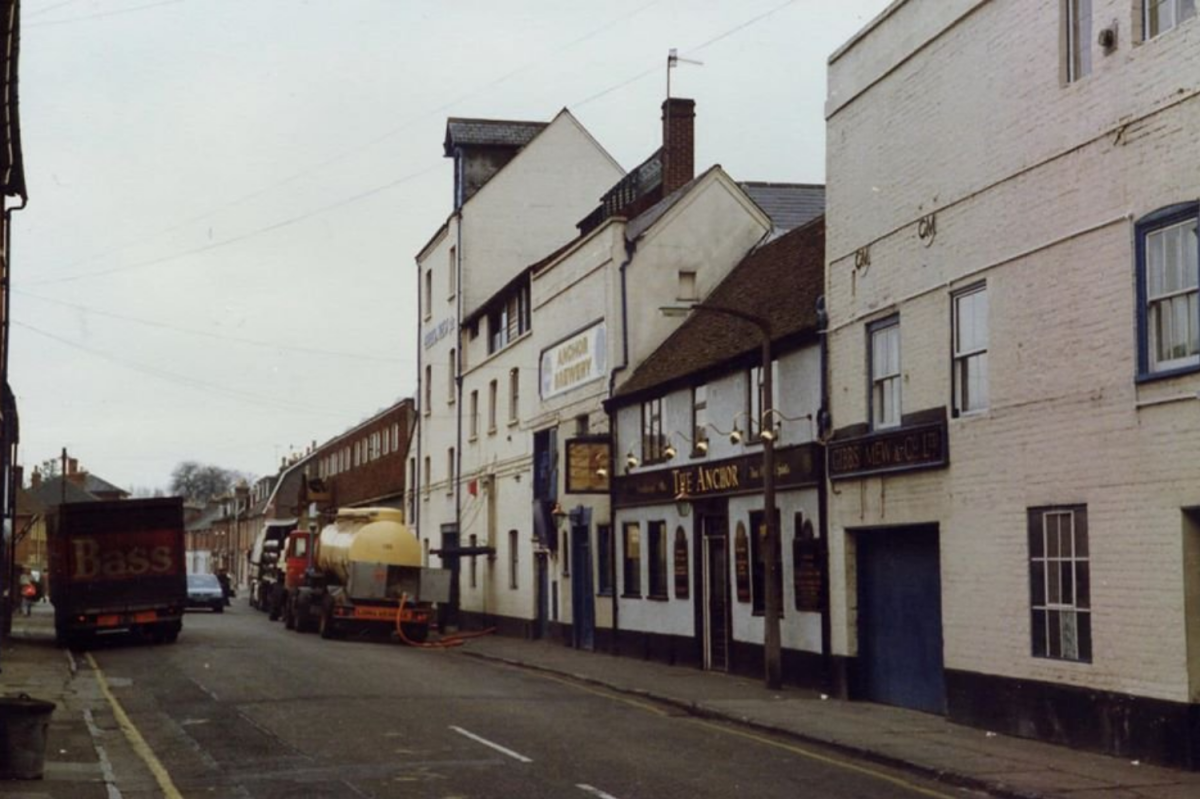
Left: the Anchor Brewery on Gigant Street (courtesy of Fisherton History Society). Right: the redeveloped site in 2020
By Phil Harding, Fieldwork Archaeologist
Can you support our work to share the story of Salisbury with the community? Please consider supporting our new film, Salisbury Uncovered.
